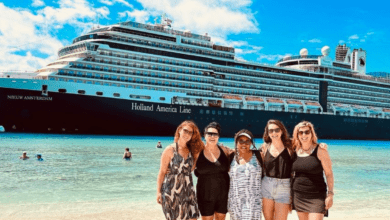Taylor Swift is many things: a philanthropist, a singer-songwriter, a savvy businesswoman, a role model. She is an object of adoration and adulation among her fans, and the highest earning entertainer in the world. Swift and her “girl squad” of supermodels, actresses and singers all but break the Internet every time they appear at A-List events or throw parties. Swift’s image, the internet claims, is more carefully manicured than a Bonsai tree, and if so, it’s for good reason: she takes very seriously her role as a role model to young girls. Squad members are asked to join this most exclusive of clubs by invitation only-and, if rumors are true, must maintain a high standard of conduct or face being kicked out. Being part of Taylor’s friend group means exposure to hundreds of thousands of fans. It means being part of a group that is literally rewriting by the day what it means, in the eyes of many young girls, to be “cool.”
A photo posted by Taylor Swift (@taylorswift) on Jul 5, 2016 at 11:32am PDT
Since much of what Swift does is with an eye to trendsetting and influencing, it is notable that her squad is so…queer. There’s Ruby Rose, for example, to whom Taylor presented GLAAD’s Stephen F. Kolzak Award this April. Then there’s Cara Delevingne, who for a hot second was dating all the famous lesbians (and who gossip rags also tried to link to fellow Swift squad members Selena Gomez and Kendall Jenner). She brings girlfriend St. Vincent (née Annie Clark) to the party. There’s even an impossibly persistent rumor-much to Taylor’s chagrin, I’m sure-that Swift and posse member Karlie Kloss are in Lesbian with each other (the portmanteau is Kaylor, for the record). If all gossip was to be believed, then when the squad showed up for an event it would be like a re-enactment of that scene from Season 1 of The L Word when the women all roll out of Alice’s MINI Cooper on Operation Soup Chef, but more realistically, it’s enough to say that Swift has some very high profile queer women on the squad.
Glee has been praised for bringing about a widespread shift in societal acceptance toward the LGBT community in the United States (and perhaps globally to some extent). This is because unlike groundbreaking shows that came before it like The L Word, Queer as Folk, or Queer Eye for the Straight Guy, Glee targeted an audience ages 13+ and was on a publicly broadcast network. Anyone with a TV could watch it, and many, many did. A whopping 39.5 million Americans alone tuned in to the episode that ran after the 2011 Super Bowl, approximately 13% of the US population. Millions of people around the world, especially teenagers, who otherwise might not have seen a show with a queer character were exposed to Kurt Hummel, Santana Lopez, Brittany Pierce, Blaine Anderson, Wade “Unique” Adams, and other bit characters who were queer.
In large measure because of the high profile and popularity of shows like Glee, The Ellen Show, RuPaul’s Drag Race, as well as famous LGBT celebrities, Millenials and their successors, Gen Z, have been broadly exposed to the sexual spectrum in a way their predecessors were not. This has had real impact on how they define their sexual orientation and express it publicly. A study by trend forecasting agency J. Walter Thompson Innovation Group released last May found that 52% of 13 to 20-year-olds don’t identify as “exclusively heterosexual,” compared to 35% of millennials aged 21 to 34.
A photo posted by Taylor Swift (@taylorswift) on Jul 4, 2016 at 6:14pm PDT
These statistics bring up an interesting question about the appearance of queerness in Taylor Swift’s squad: assuming Swift does carefully choose her squad members based on who she wants to be seen with, does she actively select for queerness as part of an unspoken diversity quotient, or is it a coincidental byproduct of that 35% figure (she and her posse are Millenials)?
Obviously, that question is unanswerable. Only Taylor knows. Nor is it even possible to guess what percentage of the squad is openly queer because the exact number of women in the squad is unclear. We can look at the women present in just one of the pictures from Swift’s 4th of July party this year as a proxy for “the squad,” but the conclusions might not accurately be generalized to the group as a whole. Still, it’s perhaps the best we can do. Of the 12 happy, bikini-wearing women standing in the ocean, Cara, Annie, Ruby, and Ruby’s girlfriend, Harley Gusman, are openly queer. That makes 25% of the group in that particular picture. This is a bit low for how millennials self-report…but six times higher than the approximately 4% global average of the female population that publicly identifies as queer in surveys. This rough number doesn’t tell us if the presence of queer women in Taylor’s squad was intentional or coincidental, but it does speak volumes to the squad’s LGBT inclusivity.
A photo posted by Ruby Rose (@rubyrose) on Jul 6, 2016 at 1:46am PDT
This inclusivity, in turn, is doing a lot of good for the LGBT community. Consciously or not, Swift is continuing the trend of sensitization of teenagers to sexual diversity that Glee started. Glee was progressive, but it was limited by the fact that it was TV. The characters were fictional. Swift and her friends are not only real people, but if life were high school, they would be the popular people. The subtextual message that Swift’s squad demographics sends is that it’s not only okay to be LGBT, but that LGBT people can be just as cool as straight people-and that there is no difference between them. Everyone is invited to Swift’s beach party, and that’s something that all Swift’s millions of young female fans can’t miss.





